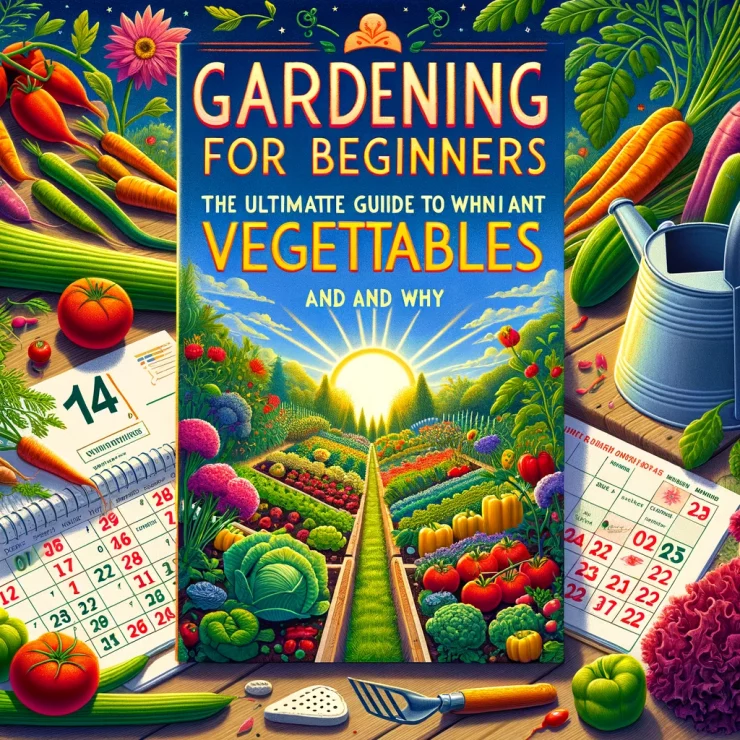Gardening is not only a rewarding hobby but also a great way to connect with nature and enjoy the fruits of your labor, quite literally. For beginners, diving into the world of gardening might seem daunting, especially when it comes to knowing when to plant vegetables. Understanding the timing behind planting vegetables is crucial for a successful harvest. In this comprehensive guide, we’ll explore the intricacies of timing your vegetable planting and delve into the reasons behind these timing considerations.

Understanding Planting Seasons:
Before delving into specific vegetables, it’s essential to understand the concept of planting seasons. Most vegetables fall into one of three categories: cool-season, warm-season, or year-round crops. Cool-season vegetables thrive in cooler temperatures and are typically planted in early spring or late summer. Warm-season vegetables, on the other hand, require warmer temperatures and are planted in late spring or early summer. Year-round crops, as the name suggests, can be planted and harvested throughout the year, depending on your climate.
Factors Influencing Planting Time:
Several factors influence the timing of vegetable planting:
Climate: Your local climate plays a significant role in determining when to plant vegetables. Consult a planting calendar specific to your region to understand the best times for planting different crops.
Frost Dates: Frost can be detrimental to many vegetable crops. Knowing the average date of the last spring frost and the first fall frost in your area is crucial for planning your planting schedule.
Soil Temperature: Different vegetables have varying soil temperature requirements for germination and growth. Use a soil thermometer to ensure that the soil has reached the optimal temperature for planting each crop.
Day Length: Some vegetables, such as spinach and lettuce, are sensitive to day length. They tend to bolt, or prematurely produce flowers and seeds, when daylight hours increase. Plant these crops early in the season to avoid bolting.
Best Times to Plant Popular Vegetables:
Now let’s take a closer look at when to plant some common vegetable crops:
Tomatoes: Wait until after the last frost date to plant tomatoes outdoors. Soil temperatures should be above 60°F (15.5°C) for optimal growth.
Carrots: Carrots can be planted as soon as the soil can be worked in early spring. Sow seeds directly into the ground for best results.
Peppers: Peppers are warm-season crops and should be planted after the danger of frost has passed. Soil temperatures should be around 70°F (21°C) for successful transplanting.
Lettuce: Lettuce prefers cooler temperatures and can be planted as soon as the soil can be worked in early spring. For a continuous harvest, sow seeds every few weeks throughout the growing season.

Beans: Beans are warm-season crops that should be planted after all danger of frost has passed. Soil temperatures should be above 60°F (15.5°C) for optimal germination.
Timing is everything in gardening, especially when it comes to planting vegetables. By understanding the optimal planting times for different crops and the reasons behind these timing considerations, beginners can set themselves up for a successful and bountiful harvest. Remember to take into account your local climate, frost dates, soil temperature, and day length when planning your planting schedule. With a bit of knowledge and careful planning, you’ll soon be enjoying the fruits (and vegetables) of your labor in your own garden. Happy gardening!
News
JJ Redick reacts to Luka Doncic trade for Anthony Davis
In one of the most jaw-dropping moves of the season, the NBA landscape was rocked by the blockbuster trade involving Luka Dončić and Anthony Davis—a swap that has sent ripples of excitement, disbelief, and heated discussion through the league. Among…
Anthony Davis FULL reaction to trade to Mavericks for Luka Doncic
In a blockbuster move that sent shockwaves through the NBA and left fans reeling, Anthony Davis has been traded to the Dallas Mavericks in exchange for Luka Dončić. In the immediate aftermath of the news, Davis took to the media…
Shaq reacts to Dallas Mavericks wanting Kevin Durant after Luka-AD trade 👀
In the constantly shifting world of the NBA, trade rumors and blockbuster moves are a regular part of the season’s drama. The latest twist has fans buzzing: the Dallas Mavericks have reportedly set their sights on acquiring Kevin Durant in…
Donovan Mitchell FILTHY poster dunk on Kristaps Porzingis 😳
In a game filled with high-intensity moments and jaw-dropping highlights, one play in particular has left fans and analysts buzzing about Donovan Mitchell’s latest display of athleticism. Early in the contest, with the atmosphere already charged by an evenly matched…
Joel Embiid hits go-ahead bucket vs Mavs then chats with Anthony Davis after game
In one of the most thrilling contests of the season, Joel Embiid delivered a clutch performance against the Dallas Mavericks, punctuating the game with a go-ahead bucket that sent the home crowd into a frenzy. The atmosphere in the arena…
D’Angelo Russell game winner as Nets hit two 3’s in 3 seconds to win vs Rockets 😱
In one of the most electrifying moments in recent NBA history, D’Angelo Russell delivered an unforgettable game-winner that left fans and commentators in complete awe. With the Brooklyn Nets locked in a tense battle against the Houston Rockets, the outcome…
End of content
No more pages to load











